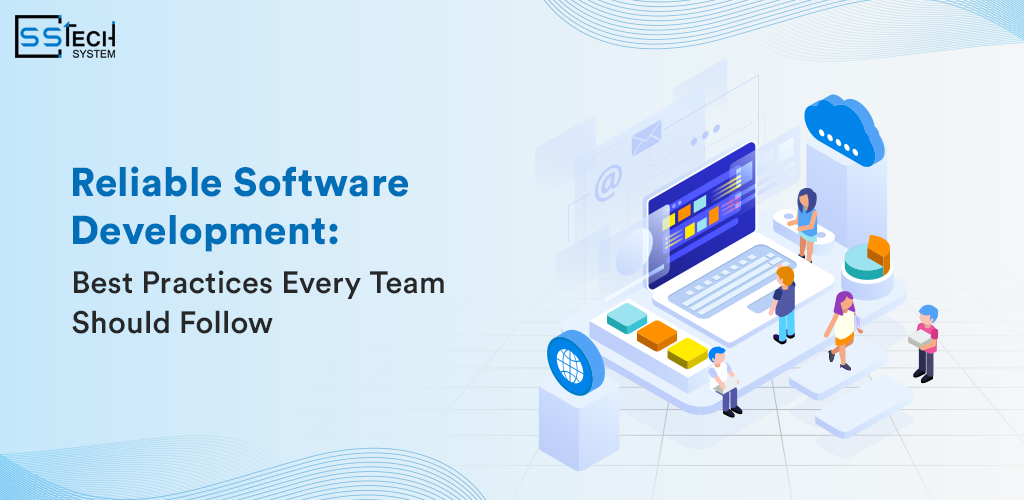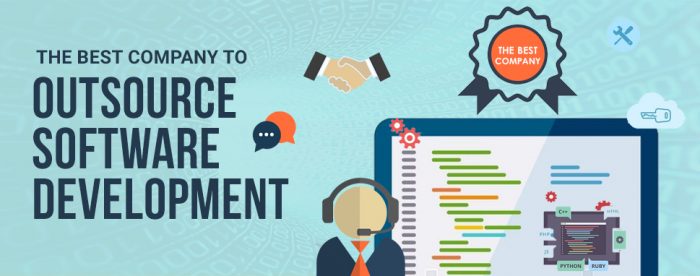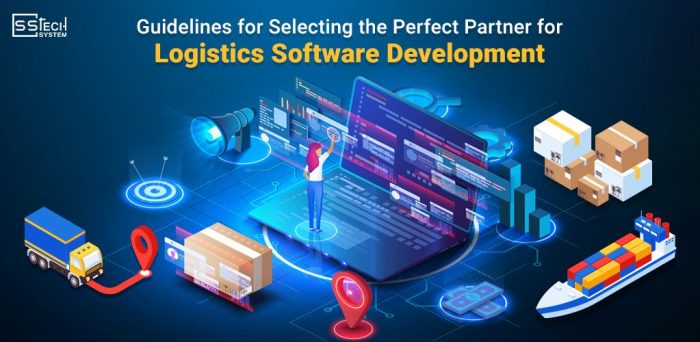
Have you ever heard that 66 percent of software projects fail because of lack of proper planning and implementation? A report by the Standish Group CHAOS claimed that the top reasons where software project failures occurred are lack of structure, gaps between communications, and poor development processes.
At the same time, the VersionOne report demonstrates that 78% of the organizations that use Agile report higher adaptability and product delivery. Writing clean code is not the only aspect of software development as the best practice.
They make your digital product reliable, secure, maintainable, and scalable to minimize expensive reunions and customer dissatisfaction. We will round up the software development best practices that will help you to develop the product that will stand the test of time.
Best Practices For Building Reliable Digital Products
Define Clear Requirements and Goals
The foundation of any successful software project is a crystal-clear vision of the product, the needs of end-users, and identifiable goals. Even the most qualified developers will struggle to create features that meet expectations or have to rework them significantly at immense expense without clear requirements.
Steps to define clear requirements:
- Conduct stakeholder interviews: Gather insights from clients, end-users, and business analysts to understand expectations.
- Develop user personas: Create detailed profiles of your target users to guide functionality and design decisions.
- Create detailed requirement documents: Outline functional, non-functional, and technical requirements to align the team.
- Define measurable success metrics: Track progress with KPIs such as response times, uptime, or customer satisfaction.
Choose The Right SDLC Model
The choice of the Software Development Life Cycle model is crucial to the project’s success. Each Agile, Waterfall, or Hybrid model has its own merits based on the challenging nature of the project, the projected schedule, and the expertise of the project team. Selecting the incorrect model may delay delivery or lead to a misunderstanding of expectations.
| Parameter | Agile Model | Waterfall Model | Hybrid Model |
|---|---|---|---|
| Flexibility | High | Low | Medium |
| Speed | Faster iterations | Slower delivery | Balanced |
| Customer Feedback | Continuous | Limited | Periodic |
| Best For | Evolving requirements | Fixed scope | Large enterprise projects |
Learn more about the Software Development Life Cycle.
Design-First Approach
By embracing a design-first mindset, intuition drives software creation, instead of making assumptions about what users need. The method stimulates prototyping and validation prior to any code being written.
How to implement a design-first strategy:
- Use Figma, Adobe XD, or Sketch to create mockups and interactive prototypes.
- Conduct design validation sessions with stakeholders to identify potential UX issues early.
- Focus on user flows and accessibility to enhance usability and reduce later rework.
Investing in design initially saves time by eliminating unnecessary development hours, unites the team around what is seen and what works, and ultimately results in a product that the user immediately feels excited about.
Coding Standards and Best Practices
Best good software development practices ensure the quality of the code, its maintainability, and facilitate collaborative work across the team. Technical debt is avoided by using uniform naming, code reviews, and modular architecture.
Common Coding Best Practices
- Follow clean code principles (e.g., SOLID design patterns).
- Write self-documenting code to make maintenance easier.
- Maintain consistent indentation and naming conventions.
- Conduct peer reviews before merging code.
- Automate formatting and quality checks using linting tools and static analyzers.
Right Technology Stack Selection
The right technology stack has a direct influence on the scalability, performance, and development cost of your product.
| Application Type | Frontend Tech | Backend Tech | Database |
|---|---|---|---|
| Startup MVPs | React / Vue.js | Node.js | MongoDB |
| Enterprise Apps | Angular | Java / .NET | PostgreSQL |
| Scalable Cloud Systems | Next.js | Python / Go | AWS DynamoDB |
Automated and Rigorous Testing
One of the most common traps in software development is skipping testing. Automation of testing ensures all code change operations have been checked to requirements, minimizing bugs and enhancing reliability.
Benefits of Automated Testing:
- Detect bugs early in the development cycle.
- Reduce QA effort and save time.
- Increase release confidence with repeatable test cases.
- Ensure consistent coverage across all modules.
Learn more about efficient QA processes through our Software Product Development insights.
Continuous Integration & Continuous Deployment (CI/CD)
CI/CD pipelines aim to automate integration, testing, and deployment to minimize human error and hasten software delivery.
- Continuous Integration enables developers to integrate code on a regular basis, as these complications are automatically identified.
- Continuous Deployment is about ensuring that features are delivered to users fast, with less downtime.
- Automated testing, monitoring code quality, and monitoring deployment are supported by tools such as Jenkins, GitHub Actions, and GitLab CI/CD.
Version Control and Collaboration Tools
Applications such as GitHub, GitLab, and Bitbucket facilitate group collaboration, versioning, and the ability to rollback.
Collaboration Best Practices
- Commit frequently with descriptive messages.
- Use feature branches for new updates.
- Conduct pull requests and code reviews.
- Merge changes regularly to avoid conflicts.
Version control is useful because remote teams can work asynchronously without conflicting with each other. It enhances the quality and transparency of software throughout the team in conjunction with code review and best software practices.
Documentation At Every Stage
Proper documentation ensures knowledge transfer and prevents repeated mistakes.
Types of Documentation:
- API documentation for developers integrating services.
- Technical architecture guides to explain system design.
- User manuals to help end-users adopt the product effectively.
Security and Compliance by Design
Security must be integrated into every phase of development (DevSecOps), not added at the end.
- Integrating security from the start reduces vulnerabilities and prevents costly breaches.
- Automated vulnerability scanners (like Snyk or Checkmarx) can detect security issues before deployment.
- Compliance with regulations (e.g., GDPR) avoids legal penalties and builds customer trust.
Post-Launch Monitoring and Support
Monitoring post-launch is essential to maintain performance, prevent downtime, and ensure user satisfaction.
Why Monitoring Matters:
- Detect performance bottlenecks early.
- Prevent unexpected downtime.
- Maintain user trust through reliable service.
- Plan timely updates and maintenance.
There are real-time performance monitoring tools such as New Relic, Datadog, and Prometheus. With linked alerts, they enable teams to take quick action on the incidents to maintain a high level of continuity.
Tools That Help You Adopt Best Practices
To implement software development best practices, it is important to choose appropriate tools. Combining the right set of tools improves collaboration, the quality of the code, and performance, leading to a more trustorthy digital product in the end. Key tools at each of the developmental stages are outlined below:
Planning & Requirements
Tools: Jira, Azure DevOps, Trello
Any successful project is built upon planning and requirement gathering. Programs such as Jira, Azure Devops and Trello help in agile planning, backlog, sprint tracking and issue prioritization.
- Jira: Provides detailed sprint boards, Kanban workflows, and reporting dashboards to monitor project progress.
- Azure DevOps: Combines project planning, source control, and CI/CD pipelines for end-to-end project management.
- Trello: Offers a simple, visual interface for smaller teams to manage tasks and priorities effectively.
Design & Architecture
Tools: Figma, Adobe XD, Sketch
Design-first approach makes the user experience of your product very user friendly. Sketch, Adobe XD, and Figma enable a team of users to create a UI/UX prototype, validate user flows, and even interact with their designs before writing lines of code.
- Figma: Supports real-time collaboration, enabling designers and developers to work simultaneously on the same project.
- Adobe XD: Offers advanced prototyping, voice integration, and usability testing features.
- Sketch: Ideal for creating vector-based UI components, symbols, and reusable design assets.
Development & Coding Standards
Tools: GitHub, GitLab, Bitbucket
Coding standards and version control are vital to teamwork, code integrity, and a seamless workflow. Software such as GitHub, GitLab, and Bitbucket enable software developers to manage the changes, branches, and sticks within the code effectively.
- GitHub: Provides repository hosting, pull requests, and collaborative project boards for open-source and private projects.
- GitLab: Integrates version control with CI/CD pipelines, issue tracking, and DevOps tools.
- Bitbucket: Supports Git-based repositories with built-in code review features and Jira integration.
Testing & Quality Assurance
Tools: JUnit, NUnit, PyTest
One of the important aspects of the new software development is automated testing. Unit, integration, and regression testing JUnit, NUnit, and PyTest help in making sure your code is robust and operational before taking it live.
- JUnit: Widely used for Java applications, supports test-driven development and continuous integration.
- NUnit: Ideal for .NET applications, providing easy-to-write unit tests and assertion frameworks.
- PyTest: A Python testing framework that supports parameterized testing and rich reporting.
Deployment & Release Management
Tools: Jenkins, GitHub Actions, GitLab CI/CD, CircleCI
Deployment and release management tools automate the process of delivering software updates to production safely and efficiently.
- Jenkins: Offers extensive plugins for automating builds, tests, and deployments across multiple environments.
- GitHub Actions: Enables seamless CI/CD pipelines directly within GitHub repositories.
- GitLab CI/CD: Provides end-to-end pipeline management with built-in monitoring and reporting.
- CircleCI: Known for fast and scalable continuous delivery pipelines with robust error reporting.
Monitoring & Maintenance
Tools: New Relic, Datadog, Prometheus + Grafana
Once deployed, your application is invariably monitored to make sure it is doing the best it can. Monitors such as New Relic, Datadog, Prometheus, and Grafana can provide real-time information about the health of the system, the bottlenecks of its performance, and potential failures.
- New Relic: Tracks application performance, error rates, and user interactions.
- Datadog: Combines infrastructure monitoring with log management and alerting capabilities.
- Prometheus + Grafana: Offers open-source monitoring with rich visualization dashboards.
Security & Compliance
Tools: SonarQube Security, Checkmarx, Snyk
Securing is not an option; it should be incorporated at all stages of development. SonarQube Security, Checkmarx, and Snyk are tools to identify vulnerabilities and comply with industry standards.
- SonarQube Security: Provides static code analysis to detect vulnerabilities, code smells, and bugs.
- Checkmarx: Offers software composition analysis for secure and good software engineering practices.
- Snyk: Continuously scans for vulnerabilities in open-source dependencies.
Benefits of Following Software Development Best Practices
Adherence to software development best practices is essential in order to provide secure, scalable, and reliable digital products. Software Development Company that adopt these standards consistently gain quantifiable benefits, such as the ability to provide high-quality software or increased customer confidence and operational efficiency.
-
High Quality
Every successful digital product is built based on high-quality software. Through the adoption of standardized coding measures, rigorous testing, and formal review mechanisms, teams undertake to ensure the software works as planned in all settings. However, when maintained pragmatically through rigorous attention to detail, costly maintenance interventions are minimized and bugs and crashes are avoided.
-
Better Scalability
Scalable software also allows you to make sure that your product can scale as many people as it can and as many new features as are desired. By implementing industry best practices for software development, your software can support increased loads without compromising performance. Scalable software is able to handle increased information capacities, user traffic, and other characteristics optimally.
-
Enhanced Security
Software reliability encompasses security. Combining secure coding practices, vulnerability scanning, and compliance checks in the design reduces the chances of attack and data leaks. DevSecOps ensures that security is a deliberate issue throughout the development process and that the enterprise is not an afterthought.
-
Improved Customer Satisfaction
The reliability, usability, and performance of a software product are directly related to customer satisfaction. A stable user experience is achieved through modern software development best practices, including continuous testing, writing development first, and integrating user feedback. When apps run well, everything updates automatically, and the features in it behave as per the expectation of the intended users; engagement and retention increase tremendously.
-
Regulatory Compliance
By following the software development good practices, it becomes easier to meet the regulations in the industry. Standards such as GDPR, HIPAA, and ISO 27001 can be maintained through proper documentation, secure coding, and audit trails. Compliance should be built in, not added on afterwards, leading to cost savings by minimising risk and creating trust among stakeholders.
-
Reduced Technical Debt
Through modern software development practices, teams can prevent or minimize technical debt, a state that arises when technical shortcuts or poor-quality code is implemented due to hard deadlines. A lower quantity of technical debt also means that the software will be maintainable and more straightforward to improve as time progresses.
-
Faster Time-to-Market
Reliable software development practices help increase the pace of development and enable faster delivery of new products to market. Definitive requirements, software-driven testing, CI/CD pipelines, and teamwork tools streamline the workflows and minimize delays. Quick time to market gives an upper hand over others, as organizations will be able to adapt with the changes in the market, customer needs, or opportunities that arise in the market.
-
Improved Team Collaboration
Best practices encourage collaborative culture among the development teams. It is ensured that the stand code is used, all versions are tracked, project progress is recorded and the known knowledge-wise to each member of the team. GitHub, Jira, and Figma are collaboration tools that enable the effortless exchange of information, control tasks, and conflict resolution.
Challenges in Adopting Best Practices in Software Development
A survey by BCG found that nearly half of all tech projects are delayed or exceed their budgets, with 19% experiencing delays of over 50% and 18% facing cost overruns exceeding 30%. Despite the strongest intentions, software projects may struggle greatly unless typical challenges are considered. Knowing these pitfalls is vital to make sure that your team is providing scalable quality digital products.
-
Poor Requirement Gathering & Miscommunication
This is one of the biggest mistakes that occur in software development and the reason why people initiate a project and do not really know what the users and other stakeholders want. Poor communication between developers, designers and stakeholders can cause the wrong features, unwanted work and time wastage.
-
Ignoring Software Architecture & Scalability
This problem is magnified by the failure to consider software architecture and scalability when you grow your product. New features are complex to deliver without a sturdy base and prone to errors due to increased user weight. Modular architecture, microservices, and scalable technology stacks are best practices.
-
Technical Debt Accumulation
Cutting corners or rushing development may deliver features quickly, but it creates technical debt that slows future development. Unrefined code, lack of proper refactoring, and skipping software development standards and best practices now can lead to more time spent fixing issues later.
-
Skipping Testing or Relying Only on Manual Testing
Other teams undervalue testing or rely entirely on manual QA. This heightens the risks of bugs, vulnerabilities to security attacks, and erratic stage production. Manual exploratory testing with automated testing frameworks (such as JUnit, NUnit, and PyTest) allows comprehensive coverage and earlier detection of bugs.
-
Ineffective Project Management
The most competent teams may not meet deadlines or deliver features efficiently if their projects are not managed. Distribution of the tasks, lack of dependencies, and tracking of the progress led to misconceptions and delays. Agile techniques, sprinting, and software such as Jira or Trello can bring order and coordination within a team.
-
Neglecting Security from the Start
Security is not something that can be an afterthought. By disregarding security measures at the very beginning of development, you put your product at risk of cyber terror and regulatory problems. Designed security, including applications such as SonarQube Security, Checkmarx, and Snyk, challenges like OWASP contributes to the elimination of vulnerabilities, even when their effects are still minor.
-
Overlooking Documentation & Knowledge Sharing
The lack of documentation results in confusion, slow onboarding, and dependence on several team members. In the absence of clear technical instructions, API programming, and practice of sharing knowledge, teams will find it difficult to sustain and grow the software. Applications such as Notion, Confluence, and Swagger make knowledge crystalized and available.
-
Failing to Plan for Maintenance & Updates
Software is never complete. Lack of prior results in falling behind in maintenance, updates, performance, security vulnerabilities, and dissatisfied users. When it comes to monitoring, setting up a post-launch strategy, such as New Relic and Datadog, which need to be mentioned, helps to keep the software reliable and adjust to the evolving demands.
Case Study: Successful Organizational Transformation
Problem
Lack of clearly defined direction and commitment in organizations causes many to face the problem of transformation. The lack of focus in efforts by a committed leadership team and a CEO tends to produce no desired results.
Solution
Jon Garcia and Wesley Walden emphasize five prerequisites for successful transformation:
- CEO Commitment: The CEO must prioritize transformation and dedicate significant time and focus.
- Aspirational Goals: Setting ambitious targets that push the organization beyond its current capabilities.
- Resource Allocation: Ensuring the best resources and leadership are committed to the transformation.
- Comprehensive Approach: Addressing all aspects of the organization, including performance and culture.
- Learning from Others: Visiting and learning from organizations that have undergone successful transformations.
Results
The prerequisites allow organizations implementing significant improvements in performance and culture to attain sustainable change and result in success in the long term.
Future-Proofing Software: Emerging Trends for Reliable Development
The global custom software development market size was estimated at USD 43.16 billion in 2024 and is projected to reachUSD 146.18 billion by 2030. In the world of software development, things change quickly, while keeping at par with the changing trends becomes vital in the creation of reliable, high-performing digital products. The following are the major trends that define the future of trustworthy software development.
-
DevSecOps Integration
Incorporating security in all project development life cycles, known as DevSecOps, appears to have become the norm. Development, operations, and security teams collaboratively find and eliminate vulnerabilities instead of considering security as a points to include at the end.
-
AI and Machine Learning in Development
Machine learning (ML) and artificial intelligence (AI) are changing the workflow of software development. AI-assisted testing, predictive analytics, and automated code creation are enhancing productivity and minimizing human error. AI would allow developers to identify anomalies and optimize resources in real-time, as well as customize user experiences.
-
Cloud-Native and Serverless Architectures
Cloud-native and serverless designs are remarkably scalable and flexible. The global cloud-native platforms market size was exhibited at USD 5.85 billion in 2024 and is predicted to surpass around USD 62.72 billion by 2034. By creating applications designed with the cloud in mind, developers can deploy functionality quickly, scale as needed, and ease the burden on servers.
-
Low-Code and No-Code Platforms
No-code and low-code platforms are democratizing software development. These mediums allow the creation of prototypes faster and deployment as they involve less manual code. Even when non-developers have to help with project delivery, teams can develop applications with visual interfaces and maintain best practices for building reliable software.
-
Continuous Monitoring and AIOps
IT Operations monitoring and Artificial Intelligence make it possible to automatically identify, acquire, and fix the problem. Real-time collection and analysis of system metrics allows development teams to anticipate failures, optimize design requirements and ensure uptime.
-
Focus on Sustainability and Green Software
Green software or sustainable software development is on the rise. To decrease environmental impact, developers are streamlining code, consuming less energy, and utilizing energy-efficient infrastructures.
Case Study – How Netflix Masters Reliability Through Best Practices
Netflix is a leading example of modern software excellence. The platform handles millions of concurrent users while maintaining 99.99% uptime globally.
Key Best Practice: CI/CD pipelines with chaos engineering to test resilience.
Impact: Rapid, automated deployments and fault-tolerant infrastructure.
Result: Seamless user experience, continuous innovation, and global reliability.
Conclusion
Implementing software development best practices, addressing common challenges, and adopting emerging trends are all essential to building reliable, scalable, and secure digital products. By focusing on quality, scalability, security, and sustainability, organizations can deliver exceptional user experiences while maintaining operational efficiency.
Ready to build your next digital product with industry-proven best coding practices for software developers? Partner with SSTechSystem, the best software development agency to turn your vision into a reliable, scalable software solution. You can also explore how to outsource software development teams for faster, cost-efficient delivery.
Frequently Asked Questions
Best practices ensure software quality, reliability, and security while improving scalability, customer satisfaction, and regulatory compliance.
DevSecOps integrates security into every stage of development, reducing vulnerabilities and ensuring compliance without slowing down delivery.
AI and ML enhance productivity, enable predictive analytics, assist in automated testing, and help identify system issues proactively.
Chaos engineering involves intentionally introducing failures to test system resilience. Netflix uses it with CI/CD pipelines to ensure continuous uptime.
By optimizing code, using energy-efficient infrastructure, and monitoring resource usage, organizations can reduce environmental impact and operational costs.










